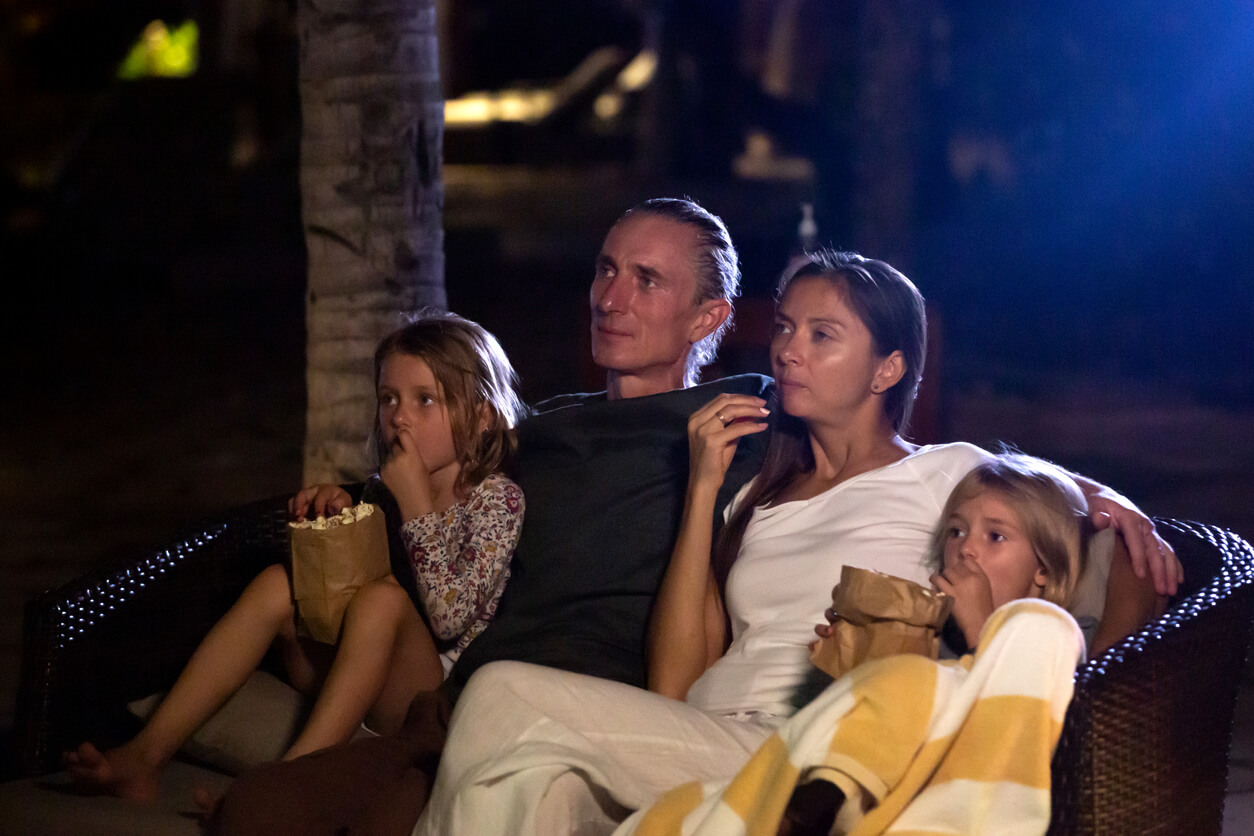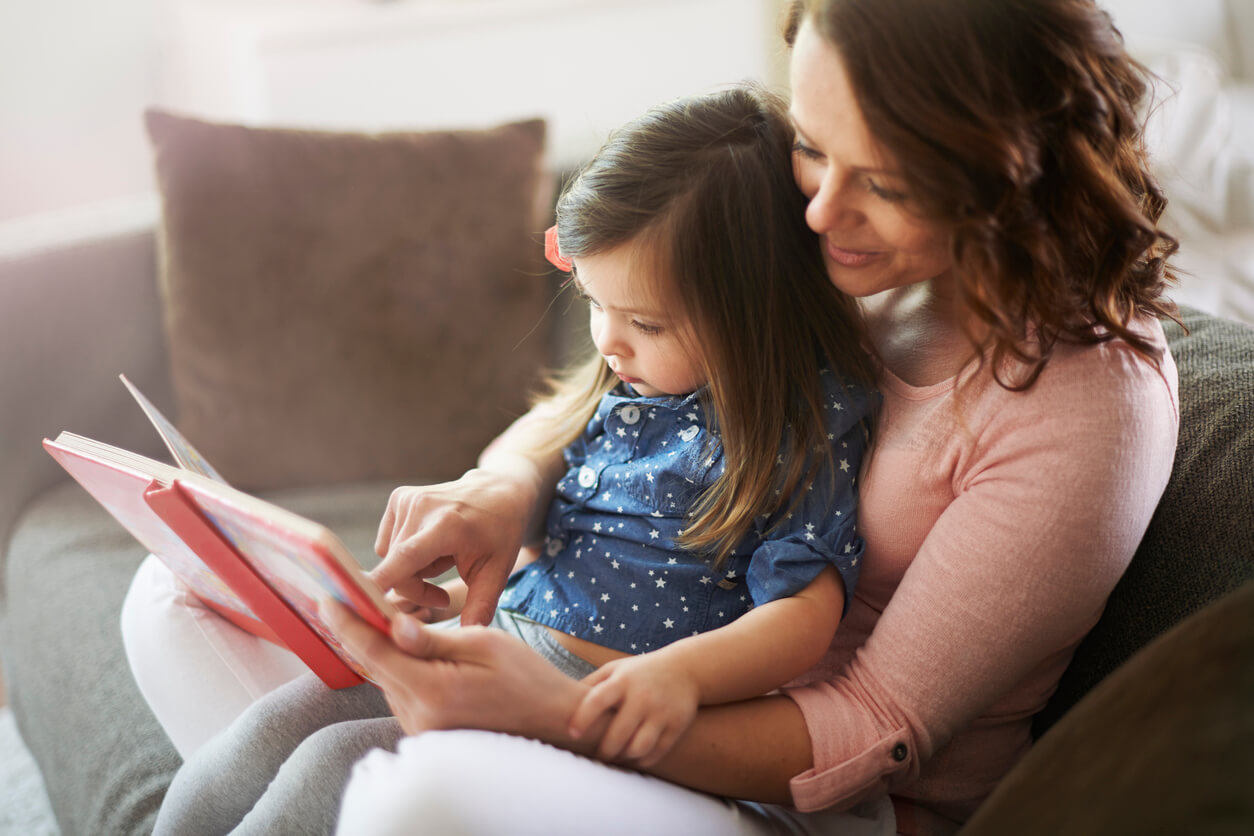Bibliotherapy and Film Therapy to Help Children Heal


Written and verified by the psychologist Elena Sanz Martín
Children can face a variety of psychological problems. Fears, behavioral problems, and emotions that are difficult to manage arise in childhood and shouldn’t be overlooked. During this stage, it’s crucial to receive a good accompaniment and acquire the tools to face these adversities before they become chronic. In this regard, bibliotherapy and film therapy for children are excellent alternatives.
Let’s keep in mind that reading stories and watching movies are activities that children naturally enjoy and that they can share with their adults of reference. But beyond providing them with a moment of leisure, these resources are ideal for explaining their problems and showing them different ways of dealing with them. And it’s through these fictional characters that valuable life lessons can be learned.
Bibliotherapy and film therapy in children: What are they?
Bibliotherapy is already a resource with a long history that began in the 1930s. It was William Menninger, a renowned American psychiatrist, who recommended to his patients the use of fiction to better understand and address their difficulties. Since then, numerous therapists of all types have employed it. In addition, this led to the emergence, in line with current times, of the option of film therapy.
In both cases, the aim is to use fictional narratives to intervene in psychological problems. Therefore, by observing the stories of characters in books and movies, it’s possible to better understand the problem, its origin, and the ways to deal with it. In this way, children can identify with the protagonists and understand how they can improve their own situation.
Although this is a resource used in psychotherapy with adults, it can also be especially appropriate for children. This is because it has a playful component that’s positive to get them involved.

How can these resources help children?
Bibliotherapy and film therapy in children provide different benefits. Among the main ones are the following:
- They allow children to feel understood and accompanied as they identify with the characters in fiction. Sometimes, when faced with a difficulty, they may feel that they’re the only ones who suffer from it. Therefore, seeing that it’s something that also happens to other people can provide them with relief and confidence.
- It helps them put their emotions into words and understand them better. At a young age, children don’t yet have a large emotional vocabulary and it can be difficult for them to understand what they’re feeling. However, watching the protagonists verbalize and express their situation makes it easier for them to understand what’s happening to them.
- It can also help them identify the source of their discomfort. If the characters’ stories are similar to their own lives, they can see what parts of their day-to-day lives the problem affects.
- They see different ways of coping with their difficulty. Sometimes, children may not know how to react to complicated situations. In this respect, the characters can serve as a model for them. Imitating and making their own the coping resources they see in movies and books can be very helpful.
- Finally, it’s a good opportunity to share with their parents how they’re feeling. Watching those movies or reading those books with their parents provides an opportunity for open and nurturing conversations about the problem that might not otherwise take place.
Using bibliotherapy and film therapy with children: What to consider
There are many situations that can be addressed through bibliotherapy and film therapy with children. For example, reluctance to go to school, fear of sleeping alone, or jealousy about the arrival of a new sibling. Symptoms of anxiety or behavioral problems can also be addressed. In fact, there’s a book or a movie for every problem. However, in order to be useful, they must meet certain criteria:
- Be appropriate for the age range of the children. This way, they’ll use a language and a rhythm that catches their attention and that they can easily understand.
- They should depict situations similar to the child’s life. The more similar the protagonists’ story is to the child’s own, the easier it’ll be for the child to identify with it. In this regard, if the characters are of the same age, gender, ethnicity, and circumstances, they’ll be more effective role models.
- Offer an appropriate example. Keep in mind that we’re looking for the child to have a reference to rely on. Therefore, this character must be positive and model the behaviors that we want the child to assimilate as their own.

Books and movies that can be useful
As we said, any book or movie that meets the above parameters can be useful. These are some of the examples that can be used:
- The movie The King’s Speech, to help children with stuttering or dysphemia.
- Minions is a movie that can be especially positive for children on the autism spectrum.
- The children’s story Go Away, Big Green Monster! helps children overcome their fear of the dark.
- I’ve Got Spots is a children’s story that helps address the skin condition vitiligo.
Books and movies as a mirror for children
In short, movies and books can be great supports for certain children’s problems and are valuable tools. Fictional characters can serve as a mirror in which children can see themselves reflected and help them overcome their problems. Sometimes they’re part of an intervention carried out by child psychologists or are part of a suggestion by educators. However, parents and guardians can also turn to this resource to help their children overcome everyday difficulties.
Children can face a variety of psychological problems. Fears, behavioral problems, and emotions that are difficult to manage arise in childhood and shouldn’t be overlooked. During this stage, it’s crucial to receive a good accompaniment and acquire the tools to face these adversities before they become chronic. In this regard, bibliotherapy and film therapy for children are excellent alternatives.
Let’s keep in mind that reading stories and watching movies are activities that children naturally enjoy and that they can share with their adults of reference. But beyond providing them with a moment of leisure, these resources are ideal for explaining their problems and showing them different ways of dealing with them. And it’s through these fictional characters that valuable life lessons can be learned.
Bibliotherapy and film therapy in children: What are they?
Bibliotherapy is already a resource with a long history that began in the 1930s. It was William Menninger, a renowned American psychiatrist, who recommended to his patients the use of fiction to better understand and address their difficulties. Since then, numerous therapists of all types have employed it. In addition, this led to the emergence, in line with current times, of the option of film therapy.
In both cases, the aim is to use fictional narratives to intervene in psychological problems. Therefore, by observing the stories of characters in books and movies, it’s possible to better understand the problem, its origin, and the ways to deal with it. In this way, children can identify with the protagonists and understand how they can improve their own situation.
Although this is a resource used in psychotherapy with adults, it can also be especially appropriate for children. This is because it has a playful component that’s positive to get them involved.

How can these resources help children?
Bibliotherapy and film therapy in children provide different benefits. Among the main ones are the following:
- They allow children to feel understood and accompanied as they identify with the characters in fiction. Sometimes, when faced with a difficulty, they may feel that they’re the only ones who suffer from it. Therefore, seeing that it’s something that also happens to other people can provide them with relief and confidence.
- It helps them put their emotions into words and understand them better. At a young age, children don’t yet have a large emotional vocabulary and it can be difficult for them to understand what they’re feeling. However, watching the protagonists verbalize and express their situation makes it easier for them to understand what’s happening to them.
- It can also help them identify the source of their discomfort. If the characters’ stories are similar to their own lives, they can see what parts of their day-to-day lives the problem affects.
- They see different ways of coping with their difficulty. Sometimes, children may not know how to react to complicated situations. In this respect, the characters can serve as a model for them. Imitating and making their own the coping resources they see in movies and books can be very helpful.
- Finally, it’s a good opportunity to share with their parents how they’re feeling. Watching those movies or reading those books with their parents provides an opportunity for open and nurturing conversations about the problem that might not otherwise take place.
Using bibliotherapy and film therapy with children: What to consider
There are many situations that can be addressed through bibliotherapy and film therapy with children. For example, reluctance to go to school, fear of sleeping alone, or jealousy about the arrival of a new sibling. Symptoms of anxiety or behavioral problems can also be addressed. In fact, there’s a book or a movie for every problem. However, in order to be useful, they must meet certain criteria:
- Be appropriate for the age range of the children. This way, they’ll use a language and a rhythm that catches their attention and that they can easily understand.
- They should depict situations similar to the child’s life. The more similar the protagonists’ story is to the child’s own, the easier it’ll be for the child to identify with it. In this regard, if the characters are of the same age, gender, ethnicity, and circumstances, they’ll be more effective role models.
- Offer an appropriate example. Keep in mind that we’re looking for the child to have a reference to rely on. Therefore, this character must be positive and model the behaviors that we want the child to assimilate as their own.

Books and movies that can be useful
As we said, any book or movie that meets the above parameters can be useful. These are some of the examples that can be used:
- The movie The King’s Speech, to help children with stuttering or dysphemia.
- Minions is a movie that can be especially positive for children on the autism spectrum.
- The children’s story Go Away, Big Green Monster! helps children overcome their fear of the dark.
- I’ve Got Spots is a children’s story that helps address the skin condition vitiligo.
Books and movies as a mirror for children
In short, movies and books can be great supports for certain children’s problems and are valuable tools. Fictional characters can serve as a mirror in which children can see themselves reflected and help them overcome their problems. Sometimes they’re part of an intervention carried out by child psychologists or are part of a suggestion by educators. However, parents and guardians can also turn to this resource to help their children overcome everyday difficulties.
All cited sources were thoroughly reviewed by our team to ensure their quality, reliability, currency, and validity. The bibliography of this article was considered reliable and of academic or scientific accuracy.
- Aguilar Durán, L. A., & Depablo Marrero, I. D. (2020). Influencia de la biblioterapia sobre el perfeccionismo infantil. Revista de Psicología, 16(32), 24-45.https://erevistas.uca.edu.ar/index.php/RPSI/article/view/3244
- Flores Fernández, C., & Rioseco Vergara, M. P. (2020). La biblioterapia y sus contextos de uso en niños y en adolescentes. Revista Cubana de Información en Ciencias de la Salud (ACIMED), 31(3), 1-17.
- Pérez Rego, D. (2021) Los cuentos que curan. Disponible en: https://loscuentosquecuran.com/
This text is provided for informational purposes only and does not replace consultation with a professional. If in doubt, consult your specialist.








